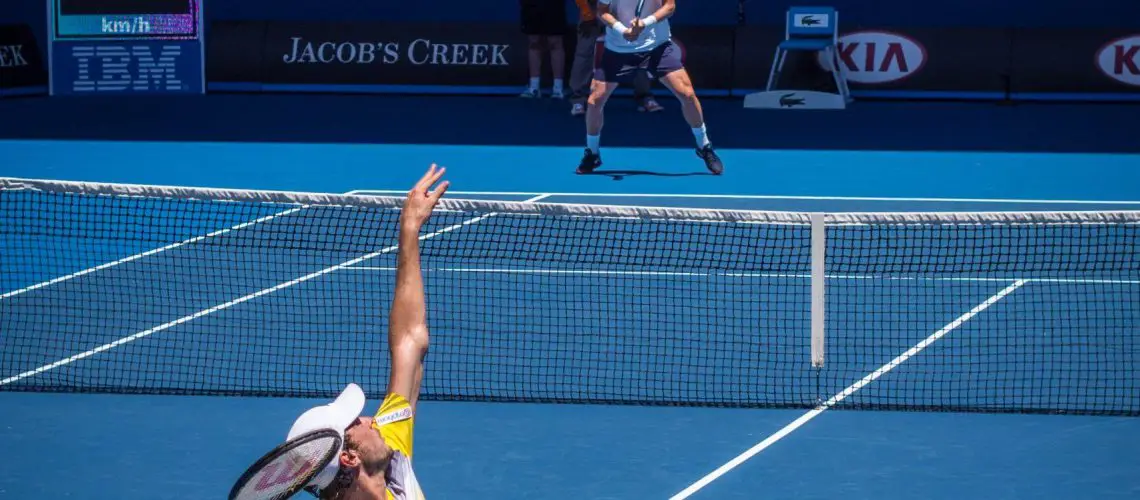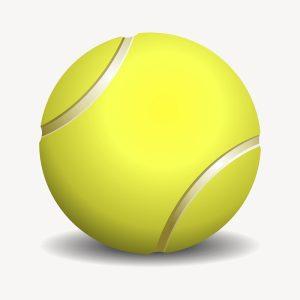We may earn money or products from the companies mentioned in this post.
Introduction

When it comes to playing tennis, the importance of selecting the right number of rackets cannot be overstated Whether you’re a recreational player or a serious competitor, having the appropriate number of rackets can greatly impact your performance on the court
Factors influencing your decision
There are several factors that should be taken into consideration when deciding how many tennis rackets to have in your arsenal Firstly, it’s important to consider your playing style and skill level Are you an aggressive player who frequently breaks strings? Or do you prefer a more defensive approach? Understanding your playing style will help determine how many rackets you need
Another factor to consider is frequency of play Do you play tennis occasionally for fun, or do you hit the court several times a week? If you’re a frequent player, having multiple rackets can be advantageous as it allows for rotation and extended racket life
The type of surface you predominantly play on is also worth considering Different surfaces can wear down strings at varying rates, so if you often switch between clay courts and hard courts, for example, having extra rackets with different string tensions can optimize your game
Common misconceptions and dilemmas
One common misconception among players is that owning more rackets automatically leads to better performance While having additional rackets as backup is beneficial, it’s important not to overcomplicate things by hoarding too many Finding the right balance between having enough backups without cluttering your bag can be challenging
Another dilemma faced by players is whether they should invest in high-end rackets or stick with more affordable options The truth is that expensive doesn’t always mean better It’s crucial to test out different racket brands and models before making a decision based on your individual preferences and playing style
Lastly, players often wonder whether they should restring their rackets or purchase new ones altogether Restringing can be a cost-effective solution to maintain racket performance, but if your rackets are outdated or no longer suit your game, investing in new ones may be the better option
In conclusion, selecting the right number of tennis rackets is essential for optimizing your game Considering factors such as playing style, frequency of play, and court surface can guide your decision-making process Avoid falling into common misconceptions and dilemmas by finding the right balance and experimenting with different racket options Remember, it’s not just about the number of rackets you own, but how well they suit your individual needs on the court
Determining the ideal number of tennis rackets for different players

Beginner players
When starting out in tennis, it’s common to wonder how many rackets you really need As a beginner, one racket is usually sufficient to get started on your tennis journey Not only does this help keep costs down, but it also allows you to focus on learning the fundamentals without any distractions
Considering your budget is crucial when deciding whether to purchase additional rackets as a beginner Investing in just one high-quality racket that suits your needs can be more beneficial than buying multiple cheaper options
Intermediate players
As you progress from being a beginner to an intermediate player, the advantages of having multiple rackets become more apparent Different playing styles and situations may call for specific racket characteristics
Having multiple rackets allows you to experiment with string tension preferences and find what works best for you It also provides the opportunity to adapt your game depending on factors such as weather conditions or court surfaces
For intermediate players, it is recommended to have at least two rackets in their arsenal This ensures that if one gets damaged during play or requires restringing, you always have a backup ready
Advanced/Professional players
For advanced and professional tennis players, having several identical rackets becomes increasingly important Consistency in performance is key at this level, and using the same racket model with the same specifications ensures that there are no surprises during matches
In addition to consistency, having multiple identical rackets allows for efficient match preparation and practice sessions Players can rotate between their rackets during training sessions, replicating match scenarios and ensuring they are fully comfortable with each racket in their collection
Advanced players also have the option to customize their rackets according to their preferences This includes custom string, grip, and weight configurations, tailoring the racket to suit their specific playing style and needs
Factors to consider when deciding on the number of tennis rackets to own

When it comes to playing tennis, choosing the right equipment is crucial One important decision you’ll need to make is how many rackets to own Let’s explore some factors that can help you determine the ideal number for your needs
Frequency of play
If you’re a regular player who hits the court often, owning multiple rackets can be advantageous Consider how frequently you practice or compete in matches The more regularly you play, the greater the wear-and-tear on your racket Having an extra one or two rackets allows you to rotate and extend their lifespan
Your budget
As with any sport, investing in quality equipment is essential for optimal performance However, budget constraints may come into play when deciding how many rackets to own It’s important to strike a balance between cost and performance needs Determine what you can afford without compromising too much on racket quality
Variety in playing conditions
Tennis courts can vary significantly in terms of surface types and weather conditions, which may influence your racket choice
-
Surface types:
Clay, grass, and hardcourt surfaces each require different playing techniques and place varying demands on your racket Adapting your racket choice accordingly can enhance your game -
Weather conditions:
Playing indoors versus outdoors also affects gameplay dynamics Outdoor matches are subject to weather changes like wind and humidity, which can impact ball control and racket grip
In both cases, having multiple rackets allows you to optimize your performance by selecting a suitable one for specific playing conditions Different rackets may offer better grip and control on clay courts or provide more power and stability in windy outdoor matches
By considering these factors—frequency of play, budget, and variety in playing conditions—you can make an informed decision regarding the number of tennis rackets to own Remember, it’s not just about owning multiple rackets; it’s about choosing the right ones to maximize your game on any court
Maintaining and Managing Your Tennis Rackets Collection
As a tennis enthusiast, it’s important to take proper care of your rackets to ensure their longevity and optimal performance on the court By following a few essential maintenance practices, you can keep your rackets in top shape for years to come
Proper Care for Increased Longevity
1 Regular Restringing:
Just like any other piece of sports equipment, tennis racket strings wear out over time To maintain consistent power and control in your shots, it’s crucial to restring your racket regularly The frequency of restringing depends on how often you play, but as a general rule of thumb, aim for at least once or twice a year
2 Appropriate Storage Conditions:
The way you store your tennis rackets when they’re not in use can greatly impact their lifespan Always keep them in a cool and dry place to prevent warping or damage caused by extreme temperatures or humidity Avoid leaving them exposed to direct sunlight or any other harsh elements that may deteriorate the materials
Keeping Track of Your Rackets’ Usage
1 Rotation System for Even Wear:
If you have multiple rackets in your collection, it’s wise to implement a rotation system during gameplay By alternating between rackets, you distribute the wear evenly across all of them instead of putting excessive strain on just one or two This helps prolong their lifespan and ensures consistent performance
2 Knowing When to Replace a Racket:
No matter how well you care for your tennis rackets, there will come a time when they need to be replaced due to wear and tear or changes in your playing style or preferences Keep an eye out for signs such as cracked frames, loose strings, or a significant decrease in performance When these issues arise, it’s time to consider investing in a new racket that suits your current needs
By following these maintenance and management practices, you can enjoy the benefits of a well-maintained tennis rackets collection Regular restringing and proper storage conditions will ensure your rackets stay in optimal condition, while implementing a rotation system and knowing when to replace a racket will help you maintain peak performance on the court
Useful Links

When is it time for a new tennis racquet
How many rackets does a top tennis player go through …
Why Do Tennis Players Have So Many Racquets?
How To Choose A Tennis Racquet (Any Skill-Level)
How to Choose a Tennis Racket
The 9 Best Tennis Rackets for Beginners
The Best Tennis String Tension Guide
Extended Length Tennis Rackets – What Are They & Who …
Types of Tennis Racquets | Everything You Need to Know
How to Choose a Tennis Racquet in 10 steps
How to Choose the Right Tennis Racquet for Beginners?
Mixed Bag – How Many Racquets Should You Bring to the …
How To Choose A Tennis Racket | Tennis Buying Guides
How to Choose a Tennis Racket, According to Science
Tips on buying a tennis racket (for beginner adult players)
5 Biggest Mistakes when Buying a Tennis Racket
FindMyRacket: Your tennis racket selector online
Choosing a tennis racquet | Equipment | Play





